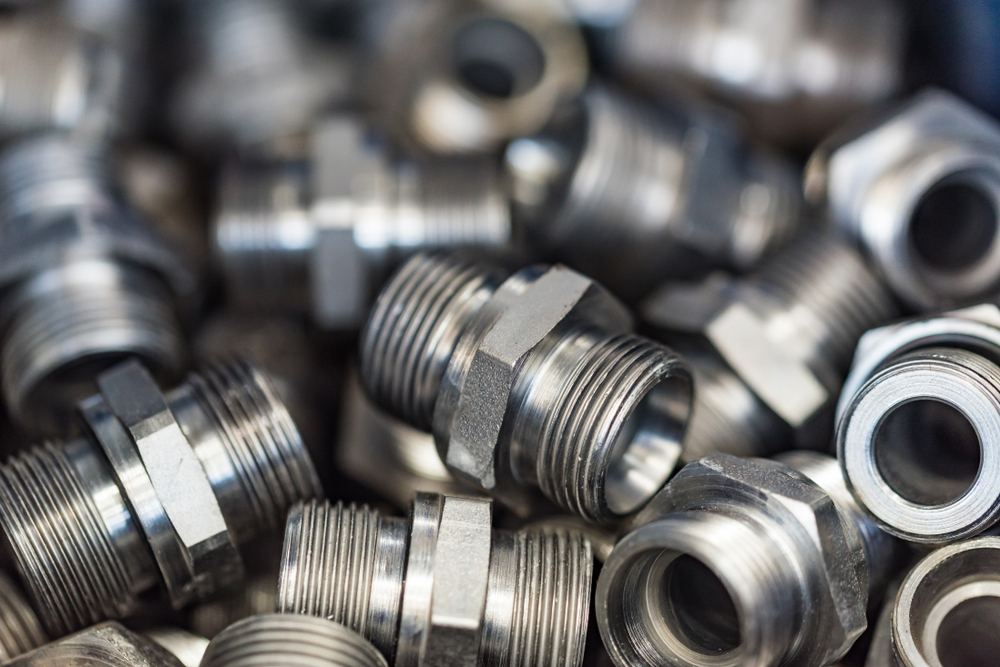
How to Identify Hydraulic Adapter Threads
Hydraulic systems are widely used in various industries, requiring precision and compatibility for smooth operation. One of the critical aspects of maintaining these systems is ensuring the correct adapter thread is used. Incorrect identification of threads can lead to system leaks, operational inefficiencies, and potential equipment damage. This guide explores how to accurately identify hydraulic adapter threads, with a focus on brass fittings thread types.
Why Identifying Hydraulic Adapter Threads Matters
Thread identification is crucial in hydraulic systems because mismatched threads can compromise the sealing integrity, leading to hydraulic fluid leakage and reduced system efficiency. Proper identification helps in:
- Ensuring compatibility between components
- Preventing damage to the threads
- Minimizing downtime caused by system failures
- Improving overall safety and reliability
Understanding the various thread standards and methods of identification is vital for system maintenance and repair.
Types of Hydraulic Adapter Threads
Hydraulic adapter threads come in different standards, depending on the region, application, and manufacturer. These include:
Unified National Thread (UN)
The Unified National thread standard is commonly used in North America. It includes:
- UNF (Unified National Fine): These threads are finer and used where high precision is needed.
- UNC (Unified National Coarse): These threads are coarser and used in applications requiring high strength.
British Standard Pipe (BSP)
BSP threads are widely used in Europe and the Commonwealth countries. There are two main types:
- BSPT (British Standard Pipe Tapered): These threads are self-sealing due to their taper, often used in high-pressure systems.
- BSPP (British Standard Pipe Parallel): These threads require additional sealing components, like O-rings or washers.
Metric Threads
Metric threads are used in many international hydraulic systems. These threads are identified by their pitch and diameter, measured in millimeters.
National Pipe Thread (NPT)
NPT threads are common in North America and are tapered, creating a seal when tightened.
JIC (Joint Industry Council) Threads
JIC threads are a widely used standard for hydraulic systems, featuring a 37-degree flare seat that provides excellent sealing.
SAE Threads
The Society of Automotive Engineers (SAE) threads are often found in North American hydraulic systems. They are parallel threads with an O-ring or flange sealing mechanism.
Tools for Identifying Hydraulic Adapter Threads
Several tools and resources can assist in identifying adapter threads:
- Thread Pitch Gauge: Measures the pitch of the thread.
- Calipers: Measures the diameter of the thread.
- Thread Identification Kits: Include various tools for precise measurement and identification.
- Reference Charts: Provide a visual and numerical guide to match threads.
These tools are essential for accurate identification, especially when dealing with complex brass fittings thread types.
Step-by-Step Guide to Identifying Hydraulic Adapter Threads
Step 1: Determine the Thread Standard
Begin by determining the thread standard. Look for markings or stamps on the fitting, which may indicate the thread type, such as UNF, BSP, or NPT.
Step 2: Measure the Thread Diameter
Use a caliper to measure the outer diameter of male threads or the inner diameter of female threads. Record the measurement in inches or millimeters.
Step 3: Identify the Thread Pitch
The thread pitch is the distance between threads, measured in threads per inch (TPI) for imperial standards or millimeters for metric standards. Use a thread pitch gauge to determine this value.
Step 4: Assess the Thread Profile
Check the shape of the threads. Common profiles include:
- Tapered Threads: Found in NPT and BSPT fittings, where the thread diameter decreases toward the end.
- Parallel Threads: Found in BSPP and SAE fittings, maintaining a consistent diameter.
Step 5: Verify the Sealing Mechanism
Identify whether the threads rely on a taper seal, an O-ring, or a metal-to-metal contact for sealing. For instance, JIC threads use a 37-degree flare, while SAE threads use an O-ring.
Step 6: Cross-Reference with Thread Charts
Match the measurements and characteristics with a thread identification chart to confirm the thread type.
Common Challenges in Identifying Threads
Wear and Tear
Threads may become damaged or worn over time, making accurate identification difficult. Use a magnifying glass or consult an expert when threads are heavily worn.
Similar Thread Types
Some threads, like BSPT and NPT, are similar in appearance but differ in pitch and angle. Use precise tools to differentiate them.
Compatibility Issues
Adapters with similar threads might fit but could lack sealing integrity. Always ensure the thread types match to avoid leaks.
Tips for Working with Brass Fittings Thread Types
Brass fittings are widely used due to their corrosion resistance and durability. However, identifying their threads requires attention to detail:
- Handle with Care: Brass is softer than steel, so avoid over-tightening when measuring or installing.
- Use Lubrication: Applying a small amount of lubricant can prevent thread galling during installation or removal.
- Check for Standards: Brass fittings often conform to BSP, NPT, or SAE standards. Confirm the thread type with markings or a chart.
Thread Identification for Hydraulic System Maintenance
Thread identification is not only essential for replacing components but also for proactive system maintenance. Regular inspections and proper identification can prevent:
- Costly repairs due to thread damage or leaks
- System inefficiencies caused by mismatched fittings
- Safety hazards arising from hydraulic fluid leaks
When dealing with adapter threads, maintaining an organized inventory with proper labeling can streamline identification and replacement processes.
Advances in Thread Identification Technology
Recent advancements in technology have simplified thread identification. These include:
- Digital Thread Gauges: Provide accurate and instant measurements.
- Mobile Apps: Allow users to input measurements and identify thread types digitally.
- 3D Scanning: Enables detailed analysis of thread profiles and dimensions.
Leveraging these technologies can significantly reduce the time and effort required for thread identification.
Conclusion
Identifying hydraulic adapter threads is a vital skill for maintaining the efficiency and safety of hydraulic systems. By understanding different adapter thread standards and using the appropriate tools, you can ensure compatibility and prevent system failures. Special attention to brass fittings thread types is essential, given their unique properties and widespread use in hydraulic systems.
Regular training, reference resources, and advances in identification tools can enhance the accuracy and ease of thread identification. By following the steps outlined in this guide, you can master the process and maintain your hydraulic systems with confidence.
Royal Brass Incorporated
Welcome Royal Brass Incorporated! We are your 3rd generation, family-owned, local hose supplier! Our family has dedicated our services to supplying northern California with all types of hoses, fittings, flanges, regulators, valves, adapters, and gauges. We pride ourselves on having the most extensive inventory in northern California. Our inventory ensures that we can fix most products on site, the same day. Here at Royal Brass Incorporated, we only hire qualified individuals who are trained in factory sales. Our fully stocked warehouses ensure that we can fill your hydraulic and pneumatic hose, tubing, and fitting needs on time, every time. High-quality customer service is our goal and has been since 1952. Stop by or contact us today!
Categorised in: Hydraulic Adapters





